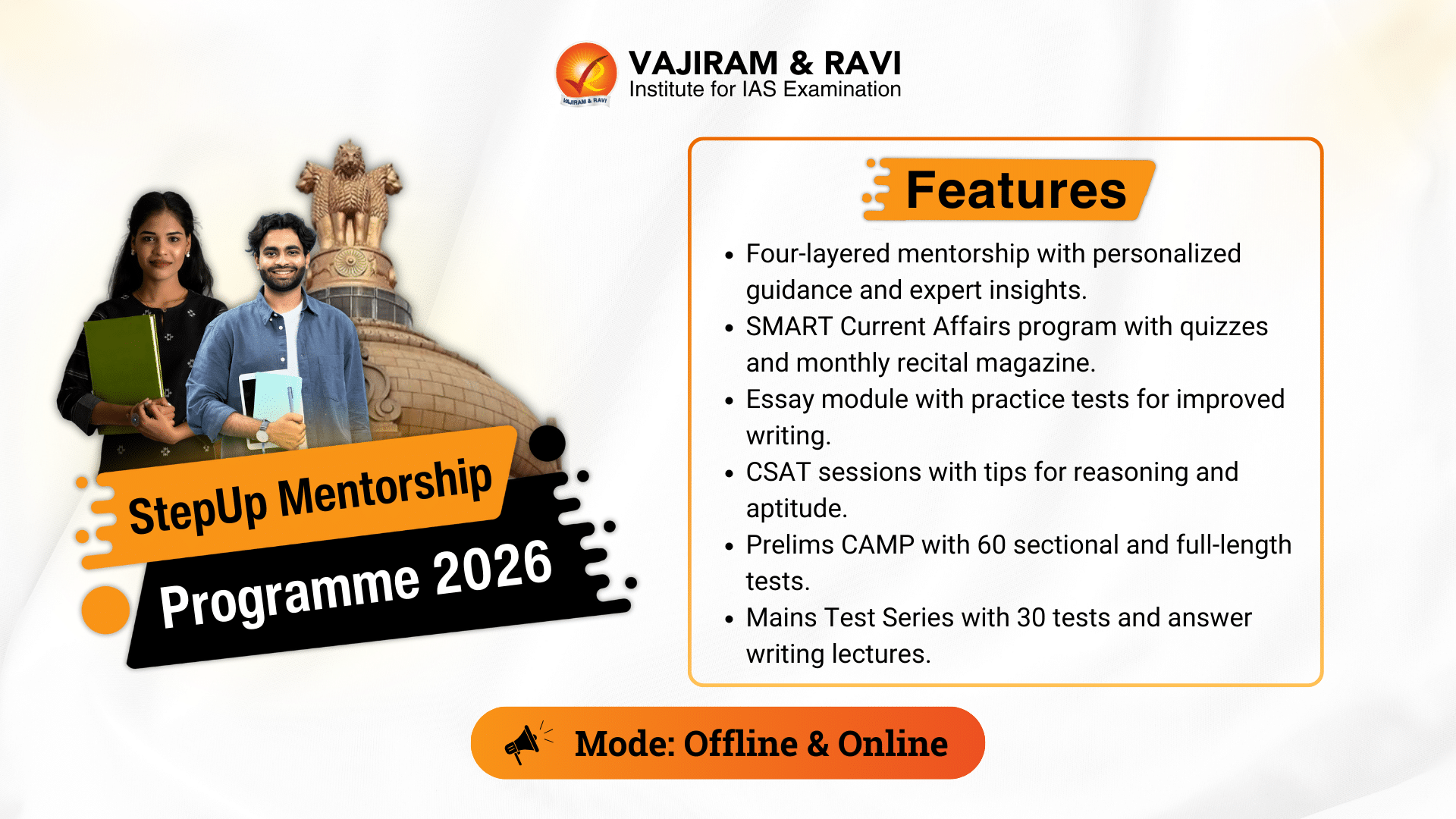The National Green Hydrogen Mission aims to create a conducive ecosystem for the development and deployment of green hydrogen technologies, facilitating a sustainable and self-reliant energy system while simultaneously reducing the nation’s dependence on fossil fuel imports.
Green hydrogen, produced through the electrolysis of water using renewable energy sources like solar or wind power, is rapidly emerging as a key component in the global transition towards a low-carbon economy. With its abundant renewable energy resources and a growing commitment to climate change mitigation, India is well-positioned to capitalize on this transformative technology.
National Green Hydrogen Mission
In January 2023, the Union Cabinet of India approved the National Green Hydrogen Mission, marking a significant step towards the nation’s commitment to sustainable energy and climate goals.
- Budget and Implementation: The mission is backed by a substantial budget outlay of Rs. 19,744 crore and will be implemented by the Ministry of New & Renewable Energy.
- Objectives: The mission’s primary aim is to establish India as a global hub for the production, utilisation, and export of green hydrogen and its derivatives.
<<filename: national-green-hydrogen-mission >>
<<Alt text: National Green Hydrogen Mission>>
- Key Components:
- Strategic Interventions for the Green Hydrogen Transition Programme (SIGHT): SIGHT will incentivise the domestic manufacturing of electrolysers and the production of green hydrogen.
- Green Hydrogen Hubs: The mission will identify and develop states and regions into Green Hydrogen Hubs, fostering large-scale production and utilization.
- Expected Outcomes by 2030:
- A green hydrogen production capacity of at least 5 MMT per year.
- An addition of approximately 125 GW of renewable energy capacity.
- Over Rs. 8 lakh crore in total investments.
- Creation of over six lakh jobs.
- A reduction in fossil fuel imports exceeding Rs. 1 lakh crore.
- Averting nearly 50 MMT of annual greenhouse gas emissions.
- Current Hydrogen Consumption: India’s current hydrogen consumption stands at around 6 million tonnes annually, with the fertilizer industry and refineries being the primary consumers.
- Future Projections: By 2050, the demand for hydrogen is expected to surge to 28 million tonnes, to meet 80% of this demand with green hydrogen.
National Green Hydrogen Mission Implementation
The mission aims to roll out in stages, initially targeting existing hydrogen-utilizing sectors for Green Hydrogen deployment and ecosystem development, then expanding to new economic sectors, with each phase’s key focus areas outlined.
- Phase I (2022-23 to 2025-26): Focus on creating demand and supply for Green Hydrogen by incentivising domestic electrolyser production, with initial deployment in existing hydrogen-using sectors like refineries, fertilizers, and city gas.
- This phase includes pilot projects for steel, mobility, and shipping, and establishing regulatory frameworks.
- Phase II (2026-27 to 2029-30): Anticipate Green Hydrogen to be cost-competitive with fossil fuels, leading to expanded production and exploration of commercial-scale projects in new sectors such as steel, mobility, shipping, railways, and aviation, alongside intensified R&D for continuous product development and deep decarbonisation of the economy.
National Green Hydrogen Mission Benefits and Goals
The National Green Hydrogen Mission (NGHM) aims to establish India as a global hub for the production, usage, and export of green hydrogen and its derivatives. Here are some key benefits and goals of the mission:
- Decarbonisation: The mission will lead to significant decarbonisation of the economy.
- Reduced dependence on fossil fuels: It aims to reduce dependence on imported fossil fuels and feedstock.
- Indigenous manufacturing: The mission will develop indigenous manufacturing capabilities.
- Employment opportunities: It will create multiple employment opportunities.
- Export opportunities: The mission will create export opportunities for green hydrogen and its derivatives.
- Green Hydrogen Hubs: The mission plans to set up at least two green hydrogen hubs in the initial phase.
- Pilot projects: The mission has an outlay for various pilot projects including low-carbon steel projects, mobility pilot projects, and shipping pilot projects.
The overarching objective of the NGHM is to make India self-reliant (Aatmanirbhar) through clean energy and serve as an inspiration for the global clean energy transition.
National Green Hydrogen Mission Challenges
The challenges of the National Green Hydrogen Mission in India include various key obstacles that need to be addressed for its successful implementation:
- Incentive disparity: The initial incentive of Rs. 50 per kilogram, which decreases annually, is considered insufficient when compared to global standards.
- Global comparisons:
- The US offers up to $3 per kilogram in base tax credit and has committed $8 billion for regional hydrogen hubs.n hydrogen projects.
- Funding Insufficiency: The government’s allocation of around Rs. 5,400 crores accounts for only 40% of the total budget for fuel production
- Europe provides around €4 per kilogram for Greece, raising concerns about the adequacy of funding.
Last updated on April, 2025
→ UPSC Notification 2025 was released on 22nd January 2025.
→ The UPSC Vacancy 2025 were released 1129, out of which 979 were for UPSC CSE and remaining 150 are for UPSC IFoS.
→ UPSC Admit Card 2025 is expected to release in first week of May for CSE Prelims Exam 2025.
→ The UPSC Prelims 2025 is scheduled to be conducted on 25th May 2025 and UPSC Mains 2025 will be conducted on 22nd August 2025.
→ Apply once through it and aspirants can apply for various government exams conducted by UPSC.
→ The UPSC Selection Process is of 3 stages-Prelims, Mains and Interview.
→ UPSC Result 2024 is released with latest UPSC Marksheet 2024. Check Now!
→ UPSC Toppers List 2024 is released now. Shakti Dubey is UPSC AIR 1 2024 Topper.
→ Also check Best IAS Coaching in Delhi
National Green Hydrogen Mission FAQs
Q1. What is the National Green Hydrogen Mission?+
Q2. What is the objective of the mission?+
Q3. What are the key targets and benefits of the mission?+
Q4. What are the strategic interventions for Green Hydrogen Transition (SIGHT)?+















